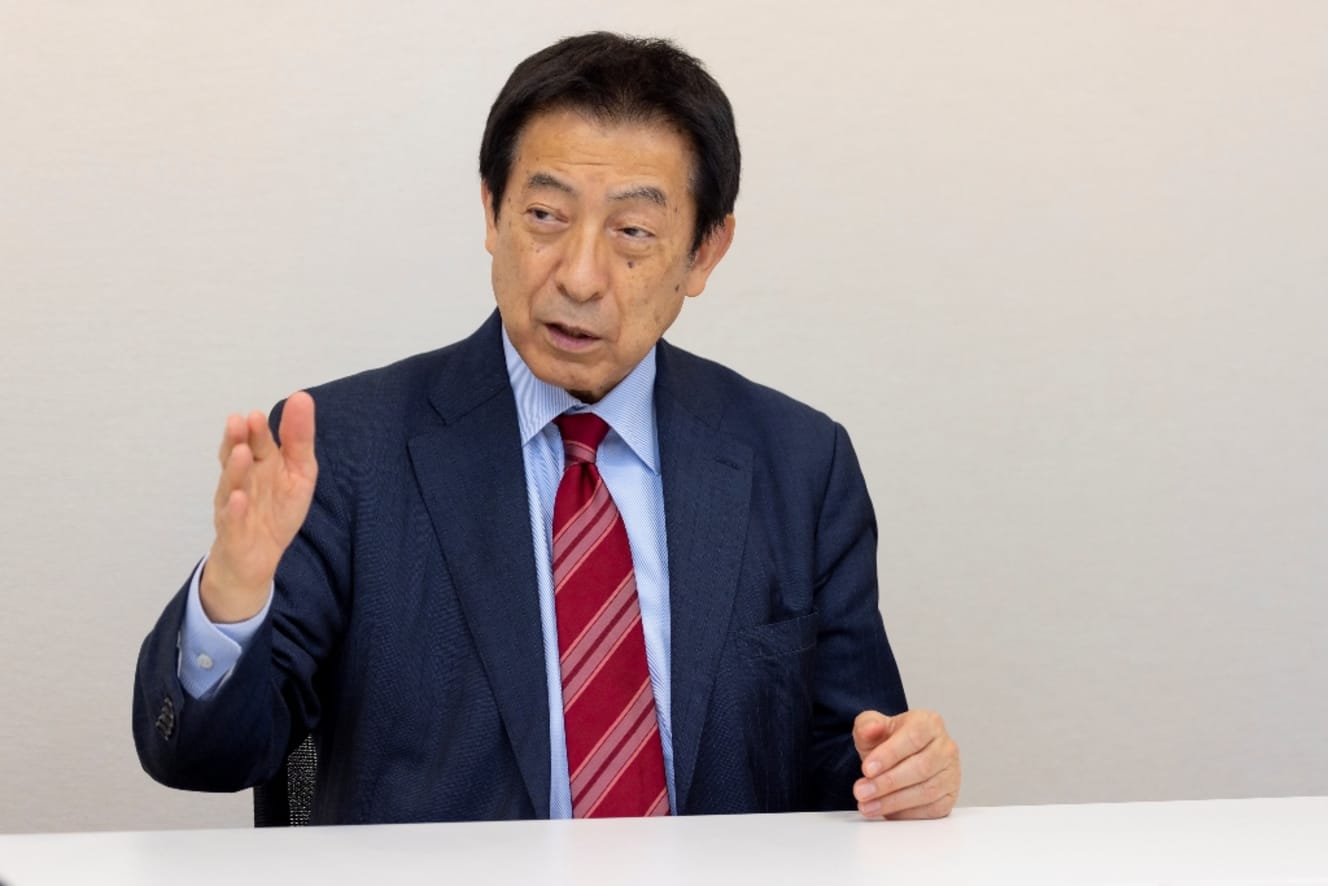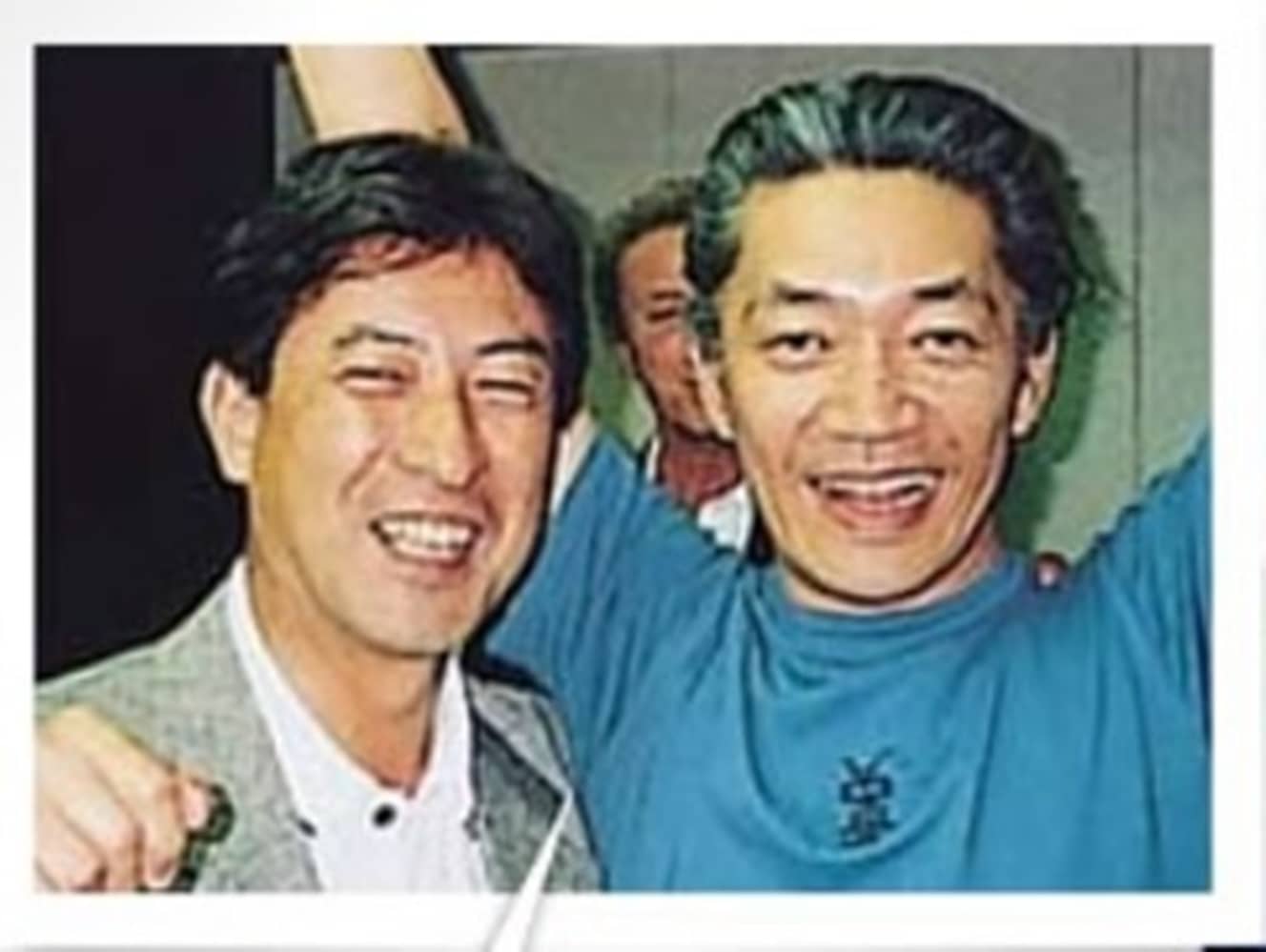Former Minister of Health, Labor and Welfare Yasuhisa Shiozaki, Reveals the Real Face of Ryuichi Sakamoto, His Friend of 57 Years, After His Battle With Cancer

Ryuichi Sakamoto, a composer and pianist who underwent rectal cancer surgery in January ’21 and announced that he was battling the disease, has passed away.
In January this year, he released his first original album in six years, “12,” and on March 17, at a regular press conference, Tokyo Governor Yuriko Koike revealed that she had received a letter from Sakamoto stating that the redevelopment of Jingu Shrine should be reviewed. It is not widely known that Sakamoto and Yasuhisa Shiozaki, who served as Chief Cabinet Secretary and Minister of Health, Labor, and Welfare under the bullet-riddled cabinet of Shinzo Abe last July, had been friends since junior high school, and that the two had taken the lead in occupying the principal’s office and staging a strike when they were students at Shinjuku Metropolitan High School.
At the end of February, Mr. Shiozaki told “FRIDAY Digital” about his memories with Sakamoto from their school days until recently, and about Sakamoto’s true face. FRIDAY Digital”. The article published on March 22 is reproduced below.
A cocky and hateful junior (smiles wryly).
Sakamoto and I have been together for so long that he is like air, but I feel comfortable and inspired when I am with him. Nothing has changed since he told me that the sound of a piano lid closing is part of the performance, which I thought was an interesting idea.
Mr. Shiozaki first met Mr. Sakamoto 57 years ago in the brass band club of Chitose Junior High School in Setagaya Ward, Tokyo. Mr. Shiozaki, who was the head of the club, had a hard time with a large boy a year younger than himself who tended to skip club activities. When he nudged him to “come to school,” he would smile amiably and nod his head, but then skip club activities again. But on the day of the presentation, he still managed to make it to the sound of the music, and I couldn’t help but wonder about him.
The head of the club is Yasuhisa Shiozaki, 72, a former member of the House of Representatives who has served as Chief Cabinet Secretary and Minister of Health, Labor, and Welfare. His junior is Ryuichi Sakamoto, 71, a composer and pianist known as “Professor” and “The World’s Sakamoto.” Mr. Shiozaki gazed into the void and recalled, “At that time, Sakamoto was a great artist.
I didn’t know at the time that Sakamoto was learning piano and composition from a teacher at the University of the Arts, and since he already had the body of an adult, I consulted with my advisor and assigned him the bass tuba for the brass instruments. From the standpoint of the head of the department, I was a cocky and hateful junior (chuckles).”
The two went on to Tokyo Metropolitan Shinjuku High School. Mr. Shiozaki took a year off to study in the U.S., and when he returned to Japan and returned to school, they were in the same class in the second grade.
We spent a meaningful year in the suburbs of San Francisco.” In ’67 and ’68, rock was at its peak, and I went to venues like the Fillmore West and Winterland. I was also numb to seeing Jimmy Hendrix play guitar at the Tongue Bella. My host brother was a band member, and I listened to live performances of Cream, Janis Joplin, etc., which had Eric Clapton. I brought a donut disc of Jackie Yoshikawa and the Blue Comets from Japan and played it for them, but I guess they didn’t respond well.
When I returned to Japan, I had Sakamoto-kun, who became a classmate of mine, listen to the records I had bought at that time. I told him that in San Francisco at the time, there were no chairs at venues, and I was surrounded by hippies sitting on the ground listening to the music.
They were connected through music, but after school exams, they would go to a small movie theater near the Isetan department store in Shinjuku, Tokyo.
In 1969, I went with Sakamoto to see “Shinjo Ouburu Karusisa,” directed by Yukio Ninagawa at the Art Theater Shinjuku Bunka. We both watched as Ninagawa-san was pushing the actors around in the rehearsal hall in Nanpeidai. We went to the opening night performance, and were impressed by the way the audience was part of the stage.
The hot blood that flowed in their bodies later became the driving force behind a strike at their high school.
After returning to Japan after experiencing firsthand the independence and diversity of the U.S., Mr. Shiozaki became fed up with the rigid rules of school life and decided to run for student body president in order to change the entire school.
In San Francisco, only Japanese, physical education, and U.S. history were required for all students, but the rest of the classes were optional. The blind children also took classes together, and the teachers did not write on the board at all at that time. The person who had the next subject with me took the blind person to the next classroom as a matter of course. The school counselor assigned to me was wheelchair-bound and disabled, but he did not compartmentalize them from able-bodied students; they were part of their daily routine.”

Shiozaki said, “I think I feel ashamed and conflicted about what I am doing.”
In the fall of his senior year of high school, he occupied the principal’s office and went on strike. Shiozaki was at the head of the group, along with Sakamoto and Kenji Baba, who later became a cameraman and author of “Action Camera Techniques” and married Sayuri Ishikawa. Dozens of students, including underclassmen, occupied the principal’s office to appeal for seven items, including uniforms, old-style examinations, and a review of evaluation methods, in addition to the cap system that was abolished when he was student body president.
The school teachers took their demands seriously, and the caps were eliminated. Sakamoto and I also went to the Yasuda Auditorium at the University of Tokyo together. It was just the day before the riot police stormed the building, and the atmosphere was tense.
I knew that the Vietnam War, which was happening when I was a student, was at the core of the atmosphere. I still remember my friend who lost his brother in the war while I was studying in the U.S. and was stunned. I also saw Muhammad Ali speak at an anti-war rally at the San Francisco Civic Center. I was anti-war, and the fact that I was desperately thinking about how much I appreciated peace as a high school student led me to go on strike.
The exchange continued, and Sakamoto, who dominated the techno music scene in the 1980s, was proud, but he also felt a sense of sadness.
From ’80 to ’82, I was a Bank of Japan employee studying at Harvard University’s Graduate School of Music. There was a YMO album in the co-op there. Not only did they have them, but they even had a section for them. On the one hand, I was happy that Sakamoto had made his mark on the world, but on the other hand, I felt a strong sense of pride that I had nothing to offer, I felt like I was behind the curve.
In 1993, Shiozaki was elected to the House of Representatives for the first time. He was dubbed the “policy newcomer” and rose to prominence in Nagata-cho with former Prime Minister Shinzo Abe and others.
Sakamoto, on the other hand, won the Academy Award for Best Original Score and a Grammy Award for “The Last Emperor” in 1987. He was a household name in Japan.
We had a slight misunderstanding and our relationship was cut off for a few years, but when I won a major international award, Baba and I sent flowers to him together. A short time later, Sakamoto contacted me and our relationship was back on track as if nothing had happened. When I returned from New York, we often ate at Appia, an Italian restaurant in Minato-ku. He even came to Ehime, my constituency, to attend a talk event I had planned. I don’t think he ever liked the LDP (chuckles).”
In Nagata-cho, it is said, “A monkey may fall from a tree, but a politician is just a man if he fails to win an election. Even now that his badge has been removed, Mr. Shiozaki continues to send out messages at international conferences in the United Kingdom in January, Barbados in the Caribbean in February, and India in March. Also, immediately after his retirement in ’21, he went to the Child Guidance Center in Ehime Prefecture to apply for the foster parent system, received training as a couple, and was registered on the foster parent registry in February ’22. In February 2010, they were registered on the foster parents’ list. They are currently serving as foster parents for two children on an irregular basis.
She says, “A politician should work for the good of society, whether he has a badge or not. I believe it is the role of a politician to ask people in need if there is anything I can do to help them. I also support NPOs that support foster parents, using the know-how and contacts I developed as a politician.”
Sakamoto, on the other hand, underwent rectal cancer surgery in January ’21 and announced that he was in stage 4.
He said, “I think it’s not right that I want to do what I want to do but the situation doesn’t allow me to do it. I am sure that he is conflicted because he can’t write songs as he used to. Even so, they are still performing chorus activities in the areas affected by the earthquake and tsunami in eastern Japan. The way they can reach out to those in need is the same as in the past. There should be no war. I haven’t changed since the days when I used to say things like, “We mustn’t take away freedom,” “We mustn’t get involved in people’s lives,” and “I’m not a greenhorn.”
Mr. Shiozaki thought about visiting Mr. Sakamoto while he was fighting his illness, but decided against it. Even though they do not see each other, their friendship, which lasted until he was 70 years old, is still deeply rooted.


Interview and text by: Daisuke Iwasaki PHOTO: Masakazu Yoshiba (interview)